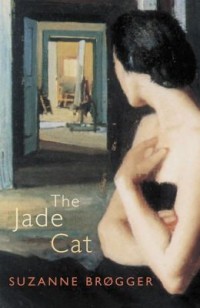 The Jade Cat
The Jade Cat
by Suzanne Brøgger
Overlook Press, 2009
416 pages / $26.95 buy from Overlook or Amazon
Rating: 8.5
“All families are something something, lick your knees.” – Count Tolstoy
“The same phenomenon that makes the family so intolerable when you are young is precisely what makes it so fascinating when you are old: that concentraion of karma, old memory, and skeletons in the cupboard”– Suzanne Brøgger, The Jade Cat
The Jade Cat, by Danish author Suzanne Brøgger, follows the fortunes of the Løvin family (cosmopolitan Danish Jews) through the course of the 20th century.
Brøgger trades in melancholia, that old reliable bread and butter of Modernist anxiety. And like many great Émigré writers (Nabokov, Dolatov, Mukherjee, Gallant), she populates the novel with fetishes and talismen. Émigré literature trends towards interiors, landscapes of symbolic expression, in an attempt to recreate homeland or conjure the physicality of a lost homeland, and Brøgger nails the inventories of a family trying to hold onto something tangible.
She lists a dress, transparent black crepe de chine with sparkling rhinestone, rows of furs from gray astrakhans to sables, waffles on an electric iron, a popular nazi emblem on a collar, black butchers boots, 14 ties, 19 pairs of socks, five silk pajamas, two evening shirts, a dinner jacket, razor blades, and strawberry preserves.
But even as the Løvins would seek to build an understandable symbolic space, the objects take on a new meaning. Far from signifying a lost home, they come to mean displacement.
Accumulating objects becomes the object of a monomaniacal drive. The family creates a new home, surrounded by beautiful things, but cannot stop consuming. This is a very perceptive move by the author, and the images of a family desperately seeking something tangible in a wash of cheap materiality come off devastating.
As a final note, the plot of the novel moves for a time to a country called Afghanistan, sometime in the sixties. The interlude is brief, but notably, peaceful. The author considers the beautiful Kush and the bizarre sport of Buzkashi. I point this out only because the language of war would suggest no such place ever existed. Brøgger has the audacity to imagine peace.
Tags: Overlook Press, Suzanne Brøgger, The Jade Cat
